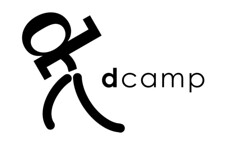I enjoyed slides from Amy Jo Kim’s talk at Etech (via LukeW). I found particularly intriguing her definition of a game.
 The formal definition: a system in which players engage in artificial conflict defined by rules, that results in a quantifiable outcome (Rules of Play by Eric Zimmerman and Katie Salen) seems uncontroversial; however, I’m not sure I agree with her informal definition — a structured experience with rules & goals that’s fun.
The formal definition: a system in which players engage in artificial conflict defined by rules, that results in a quantifiable outcome (Rules of Play by Eric Zimmerman and Katie Salen) seems uncontroversial; however, I’m not sure I agree with her informal definition — a structured experience with rules & goals that’s fun.
I’ve got this project at work. It’s a structured experience — it’s work after all. There’s a goal. I have a partner and a time limit. There is even a compiler that enforces some of the rules. And it is wildly fun. I put on my headphones and listen to pandora as I tap away at the keyboard. There’s a thrill of excitement when things work as planned. There’s even a joy to the struggle to discover what’s went wrong when they don’t. It’s the kind of project I might do for fun in my spare time, if I had more of it, and I’m jazzed that I can actuallly get paid to have such fun.
I’ve written about this before, sometimes work can be play, but I wouldn’t characterize it as a game. I think the difference is when the activity is not artifical, when it has a purpose. Nonetheless I applaud Amy Jo Kim’s effort to put fun in functional. I absolutely agree that we should all be writing software that helps people acheive their goals while having a good time. Positive feelings and emotional engagement make us more creative, flexible and productive; but even if that were not true, enabling the pursuit of happiness is not just a good idea, it’s a constitutional right.
